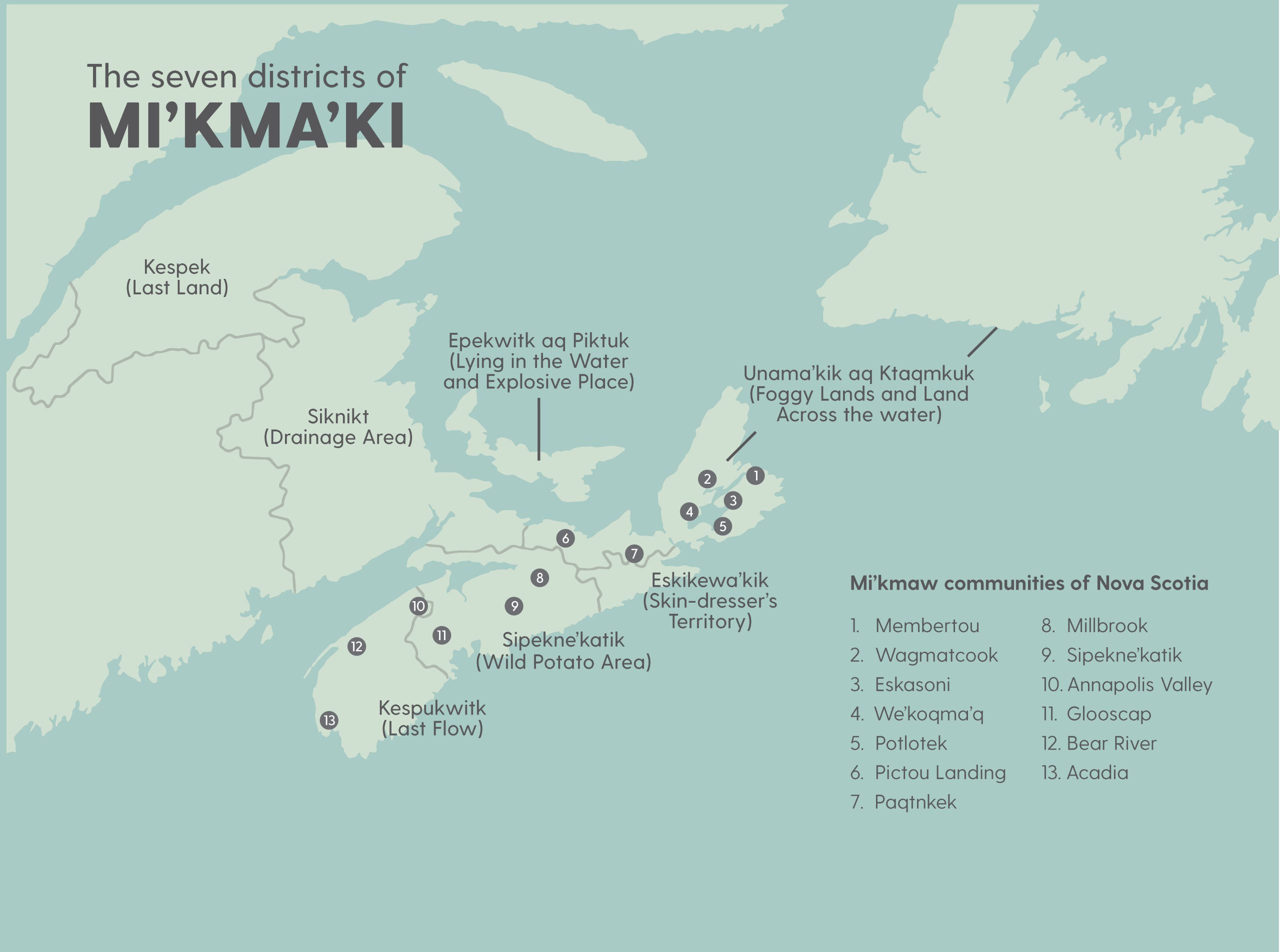Writing a Land Acknowledgement Statement
Recognizing the Mi’kmaw People and their traditional and unceded lands is an important act of reconciliation. As part of the NSCC community, we offer the Land Acknowledgment in a conscious, collective and individual way to respect and honour the Indigenous people on whose traditional territory we are located. From an historical perspective, all colonial oppressive acts were directly linked to the removal of Indigenous people from their traditional lands through legislation and colonial structures including the Indian Act, the Indian residential school system and Indian reserves. These were devices and tools used to control “Indians” and their lands and eliminate what was commonly called the “Indian Problem.”
The Acknowledgment of traditional lands is an important way to pay respect to Mi’kmaw People on whose lands NSCC is situated. This Acknowledgement does not actually change policy or the conditions for Mi’kmaw People; it should not function as acceptance of the structural conditions of settler colonialism that remain in effect today. The Acknowledgement is a beginning step on the path of reconciliation and an important place to start. It can impact the culture of NSCC and can have an even bigger effect when we – as a community – combine it with other reconciliation efforts.
There is a good chance that during your time with us, you’ll hear a land acknowledgement given – at the start of a meeting, as an opening of a group presentation or at a campus event. It’s important to offer a land acknowledgement but it is even more important to make it meaningful. Before starting work on your Land Acknowledgment statement, reflect on the process:
- What’s the purpose? (i.e., are you trying to educate/inspire others?)
- When will you use it? (i.e., at the start of a class, before a presentation, at a family gathering?)
- What does unceded mean to you?
- Do some research about the history of the land and any related treaties, Indigenous place names and language.
- Try mapping out your own lineage.
Some tips to consider
- You may want to speak directly to the people whose territory you are on to get some insight. Go directly to the community and/or build a relationship while being respectful around how the community wants to be recognized.
- Ensure your land recognition is personal and speaks to societal commitments so it compels action.
- When you’re creating a Land Acknowledgement, don’t use colonial language to recognize or describe Indigenous communities. If there’s a Mi’kmaw word you don’t know how to pronounce, reach out to someone who may be able to help you.
- Use past, present and future tenses.
- There’s no standard template or formula. Land Acknowledgments are personal and can look different for everyone.
- Understand the proper use of Mi’kmaw and Mi’kmaq – Mi’kmaw when used as an adjective or a single noun, and Mi’kmaq when it’s a plural noun. Mi’kmaq should never be used as an adjective.
Next steps
A Land Acknowledgement is a good first step in taking action towards understanding and allyship. You can further your understanding and allyship by:
- Recognizing the privilege that settler cultures have and take for granted.
- Educating yourself by taking workshops/courses, listening to Indigenous peoples and reading articles, watching documentaries, and listening to podcasts about Indigenous issues and history, to name a few.
- Working towards breaking down barriers that continue to violate Indigenous communities by taking social action and championing change.
Land Acknowledgement statement


